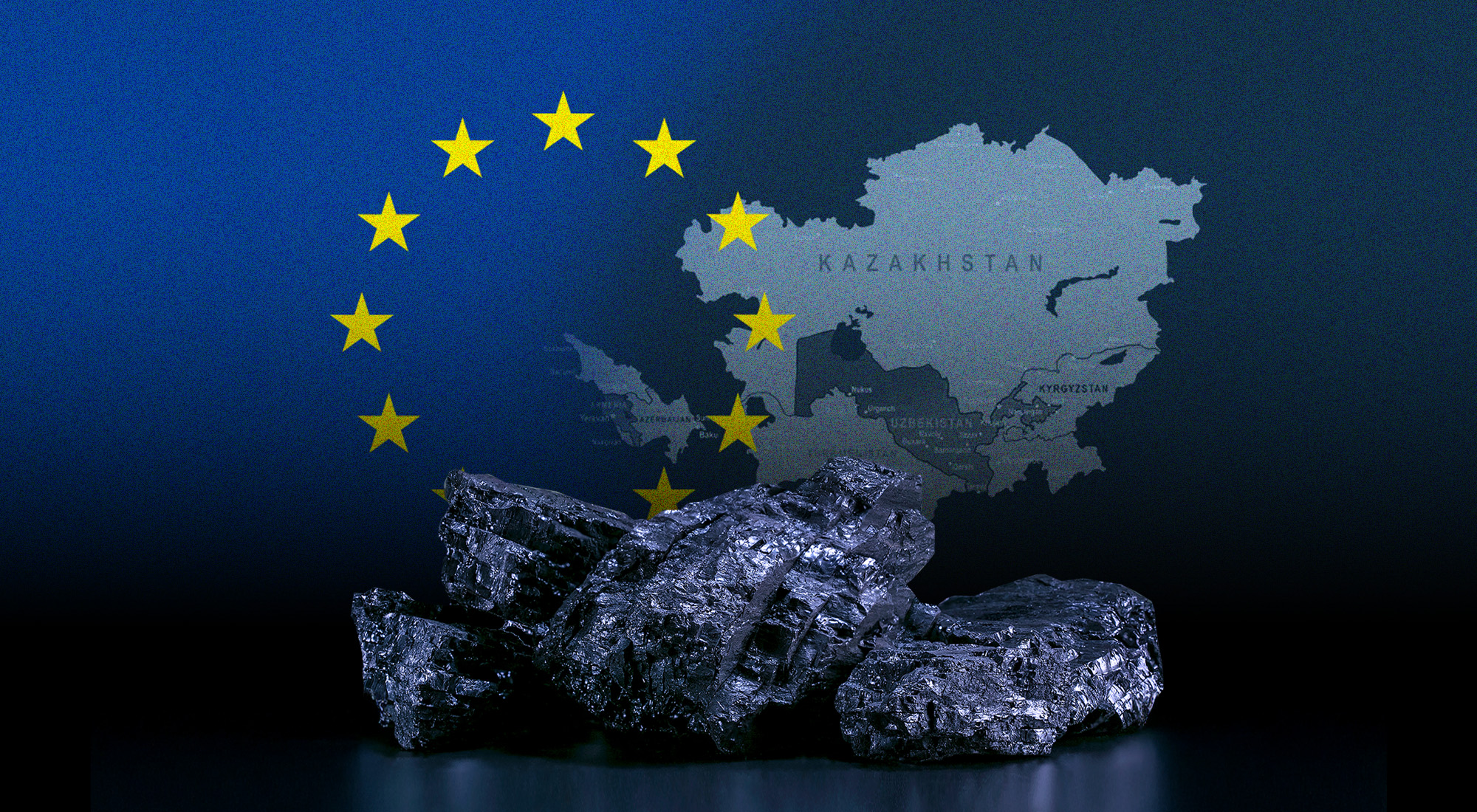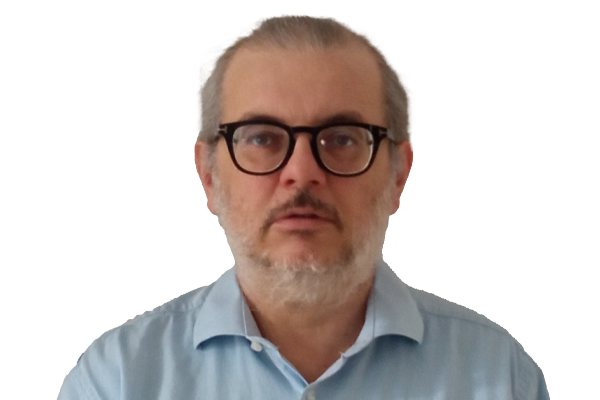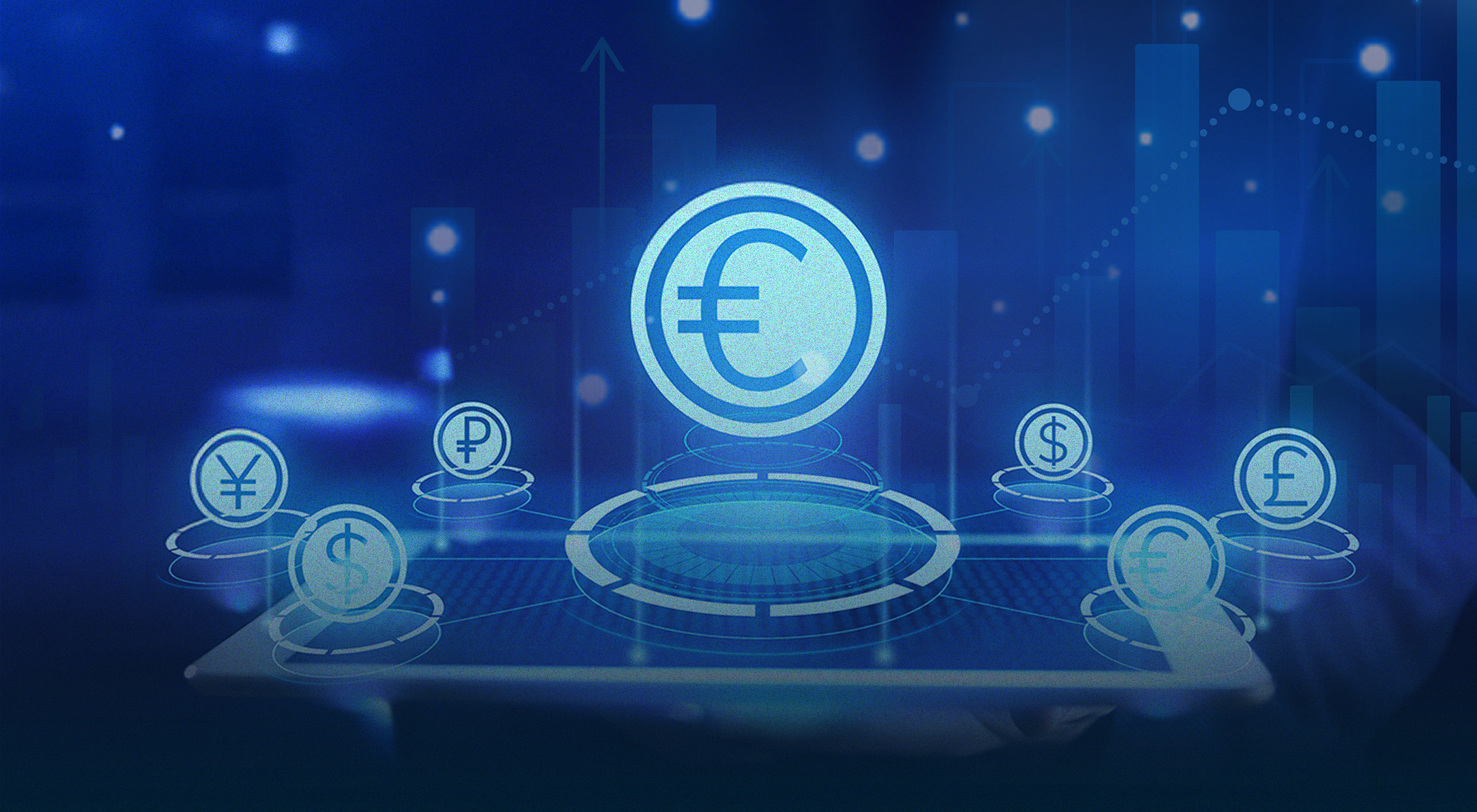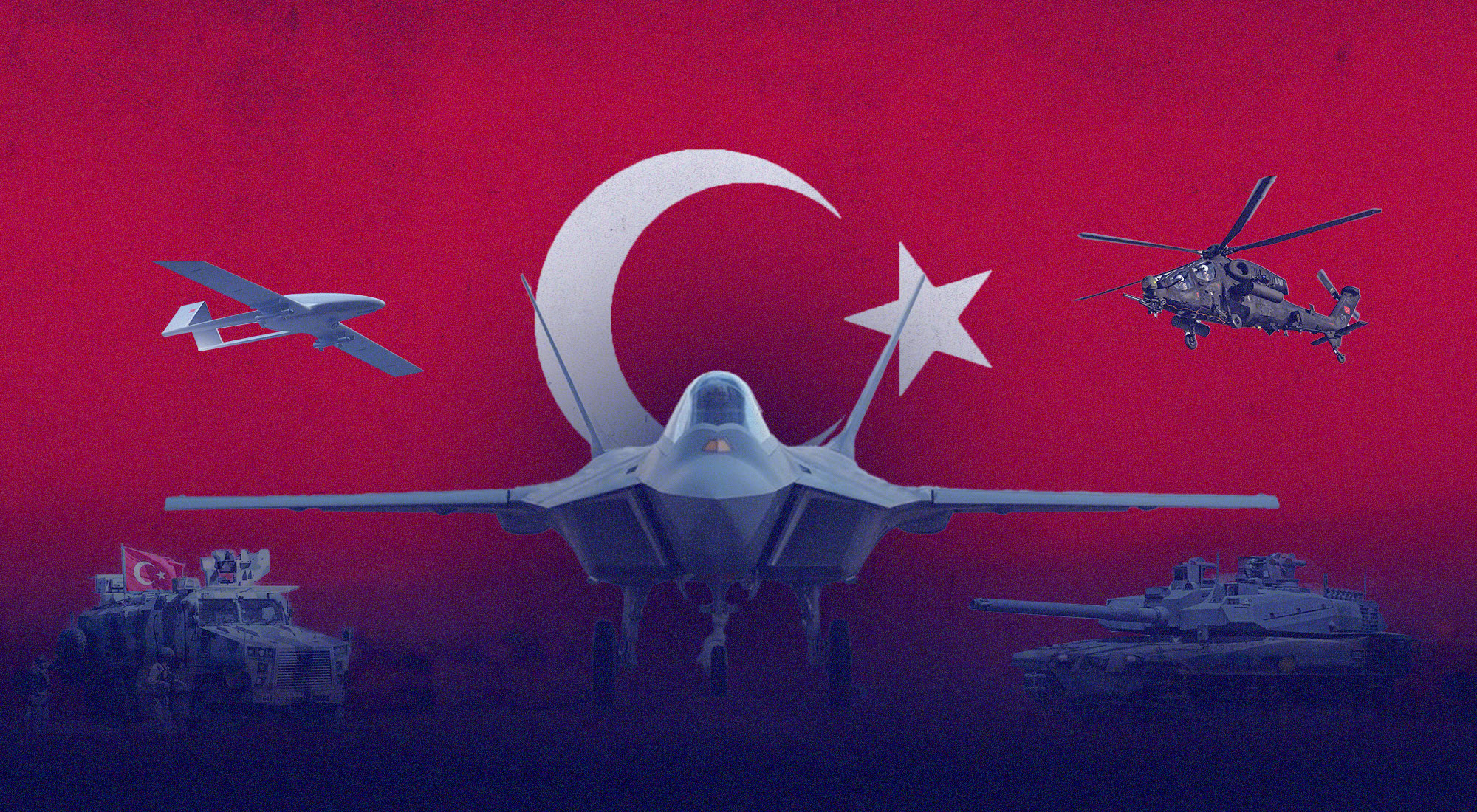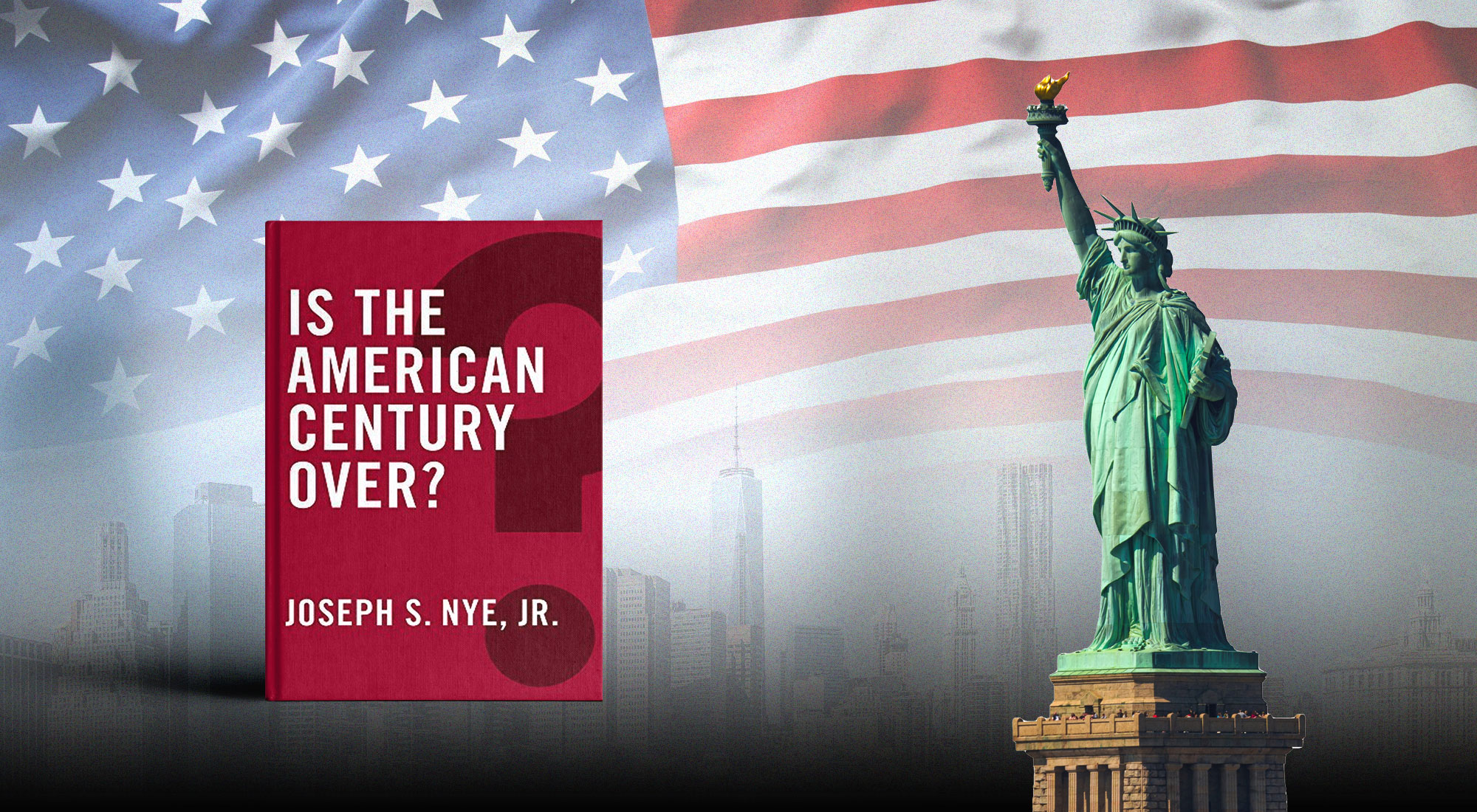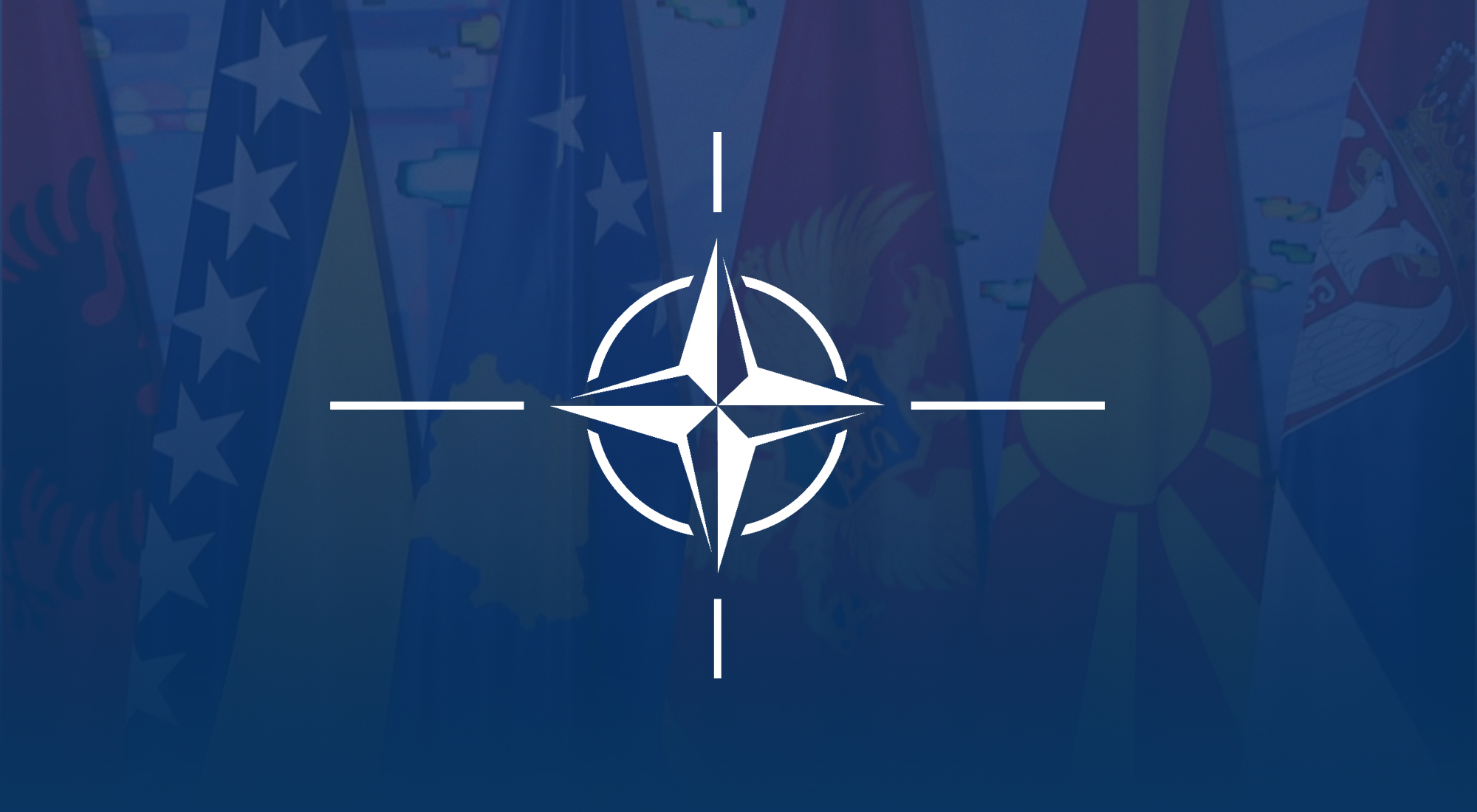Following the energy crisis triggered by the Russia-Ukraine conflict, the European Union (EU) has further committed itself to implementing a green energy transition, aiming to achieve the carbon neutrality target by 2050 as the first continent in the world. However, the EU suffers from an almost-total reliance on imports of critical minerals and rare earths, which are key commodities for green technology (production of components for the realization of solar panels, wind turbines, and batteries for electric vehicles), a condition that could delay the achievement of the climate targets. The existing threats of disruptions, which affect the global supply chain and the Chinese control of the mineral refining process, expose the EU to a condition of high vulnerability, which could be addressed by starting domestic production of refined minerals—to implement a reliable supply chain—as well as promoting new partnerships with other mineral producers. The adoption of the Critical Raw Materials Act in 2023 allows the EU to undertake a comprehensive strategy to address the existing vulnerabilities, better ensuring access to critical minerals and reducing the unbalanced dependence on Chinese imports.
Among them, Central Asian republics appear a promising partner due to their huge mineral reserves, which would allow the EU to diversify its imports of rare earths and critical raw materials. Moreover, the EU could support Central Asian ambitions to pave the way for a decarbonization process, supporting the development of the mining and refining process as a strategy of economic diversification for these geographically landlocked countries.
This convergence of strategic interests could enhance this EU-Central Asia mineral-based partnership, even if other international actors—mainly China and the United States—have focused their attention on Central Asia’s mineral reserves, triggering a geopolitical race to control these key commodities, which will enhance their strategic autonomy.
Critical minerals and rare earths: current and future perspectives
The global commitment to implement a green energy transition’s pathway and the needs related to the technological development have strongly enhanced the strategic role of critical raw minerals (CRMs) and rare earth elements (REEs) as key and not-replaceable components to realize high-tech products (laptops, smartphones), to meet the rising demand in the defense and aero-spatial industries (radar systems, drones, artificial intelligence) and mainly for green technology or clean-tech, namely to realize wind turbines, electric vehicles’ batteries, and solar panels.
Considering that the world’s main economies (EU, China, Japan) are committed to achieving the carbon neutrality target (net-zero emissions) by 2050, the CRM and REE global demand will exponentially grow in the next decades in order to realize a successful decarbonization of the energy system and to meet climate goals. Last year, for instance, lithium demand rose by nearly 30 percent, while demand for nickel, cobalt, graphite and rare earth elements rose by 6-8 percent in 2024 (copper also saw a significant demand growth of around 3 percent).[1] Described as “white gold,” lithium is a critical material for batteries used in devices ranging from smartphones and laptops to electric vehicles.
According to the International Energy Agency’s (IEA) estimates, global demand for such critical minerals as lithium, copper and cobalt will quadruple on average by 2040, even if there are different trends of growth depending on minerals and technologies: global demand of lithium and graphite compared to 2020 is expected to grow up to ninety times, while neodymium and dysprosium demand (REEs largely used for producing wind turbines, hybrid vehicles, magnets, missile guidance and other defense)[2] is expected to grow by ten to eleven times by 2050 in a net-zero scenario.[3]
Consequently, preserving adequate, stable and regular supplies of these minerals represents a key global priority for achieving a condition of energy security. However, existing distortions emphasize the extreme vulnerability of the supply chain, affected by potentially dangerous disruptions linked to rising political tensions (making transit along maritime routes unsafe) or geopolitically motivated actions because of China’s possibility of imposing restrictions on exports and trade of these strategic minerals, given its dominant position in the CRM and REE supply chain.
China is the global leader in the refining process, producing over 95 percent of battery-grade graphite and rare earths, while its share of refining for lithium and cobalt is 50-70 percent. To better understand Chinese leadership, the Australian company Lynas accounts for 4 percent of global refined production of rare earths in 2024 (from its operations in Malaysia), while only 1 percent of this refined capability is located in the U.S.[4]
Following Trump’s renovated decision to impose trade tariffs, China has threatened and imposed growing export restrictions on REEs, gallium, germanium and graphite as well as some REEs technology, toward the United States and other countries (in 2021 Beijing blocked graphite exports to Sweden), thus spreading concerns about the unreliability of the main global supplier of refined minerals.[5] The implementation of the EU-China Comprehensive Agreement on Investments and a mutual dialogue on trade issues could contribute to downplaying the threat of CRM exports’ restriction to the EU markets. However, the EU vulnerability derives not only from a potential political dimension but is linked to the lack of suppliers’ diversification and to the huge, unbalanced dependence on REE and CRM imports from China. Moreover, considering that more than two-thirds of the Chinese trade to the EU is shipped by maritime routes—mostly crossing the Bab-el Mandeb chokepoint under attacks of Houthi militias—threats of disruptions on mineral imports from China remain a geopolitical concern for the EU, pushing European authorities to diversify.
Central Asia’s mineral reserves in the EU’s strategy of diversification
The expected achievement of the carbon neutrality target in 2050, paving the way for a green energy transition, has progressively pushed the EU to enhance its strategic autonomy to ensure a regular supply of CRM, based on developing European production as well as diversifying suppliers, in order to reduce or better balance the current heavy dependence on CRM and REE imports. In the current scenario of geopolitical uncertainty, the growth of the demand for some key minerals (namely, lithium is projected to increase up to twelvefold by 2030, while nickel fourteenfold and platinum thirtyfold) has strengthened the EU’s concerns on the negative impact of this overreliance on imports from non-EU countries. For example, China is responsible for 100 percent of the EU’s supply of heavy REEs, Turkey supplies 99 percent of boron, South Africa 71 percent of the EU’s needs for platinum and an even larger share of iridium, rhodium and ruthenium.[6]
In March 2023, the EU adopted the EU Critical Raw Materials Act to address the existing challenges, strengthening strategic autonomy and economic resilience through the EU Net-Zero Industry Act, which sets ambitious manufacturing targets for selected strategic clean technologies. In this document, the EU has identified 34 critical raw materials, while 17 of them have been classified as strategic raw materials (SRM)—among them cobalt, REEs for permanent magnets, copper, gallium, as well as lithium, nickel, graphite battery grade—considering their relevance to the EU green economy and for the future developments in the defense and aero-spatial industry, digitalization and artificial intelligence. Moreover, the CRM Act sets ambitious benchmarks for the EU’s annual consumption by 2030: 10 percent from local extraction, 40 percent to be processed in the EU, and 25 percent from recycled materials.[7] The EU would like to start a domestic production of mineral resources identified in some countries, such as lithium reserves in Portugal and especially Europe’s largest deposit of REEs in the Kiruna area (Sweden), to boost its energy independence. The potential contribution of these European reserves could be strategically relevant if we consider that the Kiruna deposits also include neodymium—used for offshore wind turbines and electric vehicles—which is currently 98 percent imported from China.
However, the European environmental standards and regulations could affect the ambition to expand mineral extraction and refining capacity.[8] In spite of these potential reserves, domestic production will not be enough to satisfy the rising EU demand for minerals: imports will continue to partially cover the European needs, so the diversification of suppliers—promoting international partnership with new actors—remains the key priority to preserve security of supply as well as reduce dependence on China and downplay the risk of supply disruptions. Diversification appears to be a coherent initiative, considering that the Act stipulates that no single third country can supply more than 65 percent of the EU’s annual consumption of each strategic raw material at any relevant stage of processing. As mentioned above, in the current scenario, the EU is totally dependent on REE imports from China, and the share of dependence of most SRM is much higher than the 65 percent threshold.
In this EU strategy of diversification, Central Asia represents a promising partner, benefiting from a huge endowment of critical mineral reserves that could be used for the production of clean energy technology. The five republics have a large share of global reserves, namely manganese ore (38.6 percent), chromium (30.07 percent), lead (20 percent), zinc (12.6 percent), titanium (8.7 percent), aluminum/bauxite (5.8 percent), copper (5.3 percent), cobalt (5.3 percent), and molybdenum (5.2 percent).[9] Furthermore, Central Asia also has large reserves of rare earth elements, such as scandium, yttrium and lanthanides, which could contribute to reducing the EU’s total reliance on Chinese imports.
Kazakhstan is the frontrunner of this mineral bonanza, considering that 160 deposits of rare earth metals (out of 384 discovered in the region) are located in this country. There are also 75 deposits in Kyrgyzstan, 60 in Tajikistan, two in Turkmenistan and 87 in Uzbekistan.[10] More significantly for the EU strategy of diversification, Kazakhstan holds reserves of 21 of the 34 critical minerals and metals defined as strategic on the EU List of Critical Raw Materials (even if at present it produces 19 of those materials). Indeed, the country has the world’s largest reserves of chromium as well as important reserves of titanium, silver, lead, copper and uranium.[11]
Kazakhstan’s President, Kassym-Jomart Tokayev, has defined critical minerals as the “new oil”, calling on international companies and actors to invest in developing deposits of CRM and rare earth metals as a priority task.[12] In 2023, the government adopted the “Comprehensive Plan for the Development of Rare and Rare Earth Metals for 2024-2028” and pledged to invest around $25 million to create a favorable setting for more foreign direct investment.[13]
According to Tokayev’s ambitions, Kazakhstan will become a new energy supplier, ensuring access to its CRM and contributing to preserving the global supply chain and avoiding dangerous disruptions,[14] and also driving a national green energy transition aimed at achieving climate neutrality target by 2060, progressively reducing the role of the oil and gas sector in the energy mix.
While Kazakhstan and other Central Asian states have the resources, the EU has the technology, competences, and investment capacity. From the perspective of Central Asian states, the opportunity to expand both the extraction and processing sectors will help to develop a local industry and foster socio-economic development.[15]
Given the existing strategic convergence of shared interests, in November 2022—during COP27 in Egypt—the EU and Kazakhstan signed a strategic partnership on critical raw materials, batteries and green hydrogen, an agreement that “aims to jointly develop and better integrate EU and Kazakh strategic value chains related to raw materials, to batteries and to renewable hydrogen…promoting the modernization and decarbonization of the Kazakh mining industry and includes technology transfer and the deployment of renewable energy.”[16]
Following this trend, two years later, in 2024, the EU signed a memorandum of understanding with Uzbekistan to build a strategic partnership in developing sustainable value chains in the field of critical raw materials. Also, this country has large and untapped reserves of mineral resources and critical metals, including gold, copper, tungsten, silver, and uranium. In March 2025, Uzbek President Shavkat Mirziyoyev announced a $2.6-billion initiative to develop 76 CRM projects in the next three years, starting operations in the deposits of tungsten, lithium, titanium and vanadium, an element used in the construction of nuclear reactors. The leading idea is to attract foreign investments—mainly courting the renewed interest of the U.S. Administration—not limited to the extraction process and export but also focused on stimulating a homegrown industrial base in which minerals mined in Uzbekistan are used to manufacture cars, electronics and high-tech items at plants located in the country.[17]
Also, in Tajikistan, there is a growing attention on mineral sectors: last year, Dushanbe authorities announced the discovery of 15 new deposits of rare metals—including lithium—in the eastern hard-to-access region, because of difficult natural conditions.[18] The possibility to expand the mineral sectors would represent an economic blessing for this country deprived of oil and gas reserves, attracting financial investments for mining and exploration and boosting the national budget.
From a bilateral to a regional dimension, during the first-ever EU-Central Asia summit—which took place in Samarkand on 4 April 2025—the President of the European Commission, von der Leyen, the President of the European Council, Antonio Costa, and Central Asian presidents endorsed a Joint Declaration of Intent on Critical Raw Materials to promote regional cooperation in complementarity with the existing bilateral frameworks. For implementing this Declaration, they agreed on allocating 2.5 billion euros as part of the 12 billion euro Global Gateway Investment Package that the EU has just committed to Central Asia to concentrate on the four priority areas, with the other three being the Trans-Caspian Transport Corridor, clean energy, and digital connectivity.[19] During the summit, Kazakhstan announced the discovery of a new rare earth deposit (more than 20 million metric tons of metal). If confirmed, Kazakhstan could potentially hold the world’s third-largest reserves of rare earth metals, behind only China and Brazil. The newly discovered deposits contain neodymium, cerium, lanthanum and yttrium, elements used in the production of advanced technological devices, car batteries, catalytic converters, lasers and optics.[20]
Moreover, in June 2025, the EU Commission announced the first thirteen strategic projects located outside the EU to secure access to critical raw materials; among them, one will be realized in Kazakhstan (Sartyogan Project, for extracting and processing battery-grade graphite), which is also supported by the European Bank for Reconstruction and Development.[21]
Despite ambitious high-level statements and agreements, currently EU companies have invested in only five projects based on CRM in the region. In addition to the Sartyogan Project, German investors support two projects in Kazakhstan—for extraction and export, signed in 2022 (lithium, cobalt and nickel) and 2024 in Eastern Kazakhstan (lithium)—while a Danish company has been involved in exploration and mining activities (lithium, copper, and antimony) in Tajikistan since 2024, and French TotalEnergies has been engaged since 2023 to develop rare earth metal deposits needed for the production of solar panels in the Samarkand region.[22]
In addition to the efforts to start mineral production and refining processes in Central Asia, the EU must develop trade corridors to link the region with the EU markets. The Middle Corridor—the Transcaspian International Transport Route—represents the best strategic option for the EU in order to ensure a regular supply of minerals from Central Asia, avoiding transit in Russian territory. Similar to the trade of other goods, Central Asia’s refined minerals will be delivered across the Caspian Sea from the Kazakh ports of Kuryk and Aktau, as well as from the Turkmen port of Turkmenbashi, to the Azerbaijani port of Baku and then to the EU through Turkey or Georgia (crossing the Black Sea). This route is already operational to deliver uranium supply from Kazakhstan to France (affected by Niger’s unreliability as a traditional supplier after the military coup), which is also useful for Kazakhstan’s energy diversification—as the world’s largest supplier (covering 40 percent of global demand)—because its exports have been damaged by international sanctions against Russia, which hit St. Petersburg port, from which Astana shipped all uranium exports.[23] Indeed, Kazakhstan and Uzbekistan’s uranium reserves have become strategic for France to replace uranium supply from Niger, also because nuclear power accounts for more than 70 percent of the French energy mix to produce electricity. In 2023, President Emmanuel Macron visited these two countries to enhance partnership to secure uranium supply, also through massive investments in the mining sector. The French company Orano holds a 51 percent share of the KATCO uranium company (together with Kazatomprom) while committing itself to a $500 million investment in uranium extraction and processing in Uzbekistan.[24]
The competition with China and the EU: an unbalanced critical raw materials race?
Following the efforts to deepen and boost an energy partnership with Central Asian states, the region has become a concrete option for the EU to break and reduce its dependence on Chinese control of the CRM and REE supply chain, promoting a diversification of mineral imports able to enhance the EU’s energy security. However, in spite of this promising cooperation, the EU approach appears excessively optimistic if we consider that the 1st Commissioner for International Partnerships in the European Commission, Jozef Sikela, announced in March 2025 that “over 40 percent of Europe’s supply of strategic minerals could come from Central Asia.”[25] As a matter of fact, we should consider that Central Asia’s enormous mineral potential has also represented an attractive pole of interest for other countries, which aim to implement a green energy transition, ensuring themselves a regular supply of raw materials, so triggering a geopolitical competition to control these strategic reserves of minerals and rare earths.[26]
China has been strategically positioned in the Central Asia mineral and energy sector for a long time, thanks to focused investments and technological cooperation to exploit this huge potential. The result of this strategic partnership is that in 2024, China imported 70 percent of all the critical raw materials extracted in Central Asia.[27]
At present, China is the main partner for Kazakhstan, as the largest importer of CRM such as molybdenum, zinc, lead, copper and others from this country. Furthermore, Beijing controls the production of CRM in Tajikistan and Kyrgyzstan, while it is also increasing its presence in Uzbekistan. Compared to the five projects financed by EU companies, China has invested in 25 projects in Central Asia, supporting geological exploration, extraction and production of CRM and REE, expanding its geopolitical footprint in the region.[28]
Chinese energy policy is not only limited to mineral extraction and trade but also aims at implementing a comprehensive strategy to support Central Asian efforts to realize a green energy transition. China is currently the main supplier of electric vehicles (EVs) in Central Asia and a key provider in developing EV infrastructure in the region.[29] Last year, Uzbekistan launched the joint production of Chinese electric vehicles within the country.[30]
In 2024, China signed an agreement to build one of Central Asia’s most advanced copper smelting facilities by 2028, which will reduce Astana’s dependence on Russian refined copper, thus supporting its economic diversification. Moreover, in 2024, Kazakhstan opened its first tungsten production plant in cooperation with Beijing to manufacture high-value tungsten carbide, mainly used for military hardware and drilling equipment.[31]
The U.S. is the other main competitor for the EU in Central Asia because the Chinese control of 85 percent of the global processing capabilities of CRM and REE poses a serious threat for the U.S. high-tech and defense sector, as it is affected by Beijing’s restrictions on trade following their ongoing commercial war.[32] In 2024, Washington launched the C5+1 (U.S. and the five Central Asian states) Critical Minerals Dialogue to engage the regional actors in the realization of an alternative, sustainable and reliable critical mineral supply chain.[33]
Also, the Trump Administration has recognized the need to enhance partnership with Kazakhstan and Uzbekistan, supporting their mining and processing sector to open an alternative supply chain opposed to China. In April 2025, Uzbek authorities met U.S. business executives to sign deals and agreements covering the exploration, extraction and processing of minerals, also envisaging the support of U.S. technologies and investments. [34]
The promotion of supply routes delivering strategic minerals from Central Asia to the EU, U.S. and China markets will be a crucial factor for evaluating the success in this energy competition. China benefits from a significant strength linked to the regional architecture of connectivity that Beijing has built and financed within the Belt and Road Initiative. Since 2013, China has worked to realize infrastructural trade corridors crossing the region (the China-Kazakhstan railways and highways corridors, the future China-Kyrgyzstan-Uzbekistan railway route), which could be used to further increase CRM supply to Chinese markets.
Concerning the U.S., the Middle Corridor will be an option to link Central Asian mineral production to the American markets, but also the north-south corridors crossing Afghanistan to open new export outlets from the Pakistani ports in the Indian Ocean represent an attractive option to deliver strategic minerals to the U.S. by maritime routes.
Uzbekistan signed a trilateral agreement in 2023 with Afghanistan and Pakistan to build the Trans-Afghan railway corridor, while Kazakhstan and Turkmenistan have started dialogue with Afghanistan to build another parallel north-south railway corridor.[35]
It should also be noted that currently, Russia is working to maintain its footprint in the regional connectivity architecture by showing interest in linking railway corridors crossing Afghanistan with the Moscow-backed International North-South Transport Corridor (INSTC). Russia maintains a role in Kazakhstan’s uranium sector, not only in the mining process but also in offering the above-mentioned traditional route of export (St. Petersburg port). Central Asian projects to promote diversification and a multi-vectorial policy could effectively clash with Russia’s ambition to preserve its influence in the post-Soviet space.
Conclusion
Despite some diversification initiatives to increase non-Chinese production of refined minerals, China will remain the dominant global supplier in the next decades. In 2035, China is set to supply over 60 percent of refined lithium and cobalt and around 80 percent of battery-grade graphite and rare earth elements.[36]
Central Asia will remain a source of raw materials for Beijing, thanks to the geographical proximity and the large reserves, to satisfy the growing domestic demand in the country for the production of high-tech components and green technology.
Nevertheless, the EU has wisely undertaken a promising dialogue and cooperation based on mutual benefits with Central Asian countries, which remain strongly engaged in diversifying their energy relations and opening new market outlets to escape from the traditional Sino-Russian influence. The shared convergence to realize the Middle Corridor, involving a wider framework of cooperation, also Azerbaijan, as a key linchpin for this east-west corridor, will concretely open an alternative transport route to effectively ship strategic minerals to the EU.
In spite of the concrete possibility that Central Asia could become a CRM and REE supplier for the EU in the medium term, it is necessary to adopt a realistic approach to analyzing this partnership, which could help the EU to reduce its reliance on Chinese imports (and from other countries) by geographically diversifying the external suppliers, without, however, solving the general dependence on imports from abroad, due to the constraints that will delay or freeze the perspective of domestic production (environmental regulations, required investments, effective size of reserves). Moreover, EU states and companies have to expand their investments to a growing number of projects in the region in an attempt to compete with the larger U.S. and Chinese financial resources.
References
[1] IEA, “Global Critical Minerals Outlook 2025,” May 2025, https://www.iea.org/reports/global-critical-minerals-outlook-2025.
[2] “The Geopolitics of Rare Earth Elements,” Stratfor, April 8, 2019, https://worldview.stratfor.com/article/geopolitics-rare-earth-elements.
[3] IEA, “The Role of Critical Minerals in Clean Transition,” May 2021, p. 8, https://www.iea.org/reports/the-role-of-critical-minerals-in-clean-energy-transitions.
[4] IEA, “Global Critical Minerals Outlook 2025.”
[5] Pier Paolo Raimondi, “EU and Italian De-risking Strategies for Energy Transition: Critical Raw Materials,” IAI PAPERS 25, June 9, 2025, https://www.iai.it/en/pubblicazioni/c03/eu-and-italian-de-risking-strategies-energy-transition-critical-raw-materials.
[6] Milan Grohol and Constanze Veeh, “Study on the Critical Raw Materials for the EU 2023,” Final Report, Luxembourg, Publications Office of the EU, 2023, p. 10, https://doi.org/10.2873/725585; Pier Paolo Raimondi, “EU and Italian De-risking Strategies for Energy Transition: Critical Raw Materials.”
[7] European Commission, “Critical Raw Materials: ensuring secure and sustainable supply chains for EU’s green and digital future,” March 16, 2023, https://ec.europa.eu/commission/presscorner/detail/en/ip_23_1661.
[8] Ibid.
[9] Roman Valkuchuk and Indra Overland, “Central Asia Is a Missing Link in Analyses of Critical Materials for the Global Clean Energy Transition,” One Earth 4, no. 12 (December 17, 2021): 1678-92.
[10] Mark J. Mihalasky et al., “Rare Earth Element Occurrence Database of the Tien Shan Region, Central Asia,” US Geological Survey data release, 2017, https://doi.org/10.5066/F7TM7913.
[11] “Kazakhstan’s critical materials potential ripe for EU supply chain resilience,” Euractiv, December 13, 2024, https://www.euractiv.com/section/economy-jobs/news/kazakhstans-critical-materials-potential-ripe-for-eu-supply-chain-resilience/.
[12] Official website of the President of the Republic of Kazakhstan, “President Kassym-Jomart Tokayev`s State of the Nation Address “Economic course of a Just Kazakhstan”, Akorda.kz, September 1, 2023, https://www.akorda.kz/en/president-kassym-jomart-tokayevs-state-of-the-nation-address-economic-course-of-a-just-kazakhstan-283243.
[13] Nurbek Bekmurzaev, “Kazakhstan and the West Look to Strengthen Rare-Earth Cooperation,” Eurasia Daily Monitor Volume: 21 Issue: 99, July 1, 2024, https://jamestown.org/program/kazakhstan-and-the-west-look-to-strengthen-rare-earth-cooperation/.
[14] Ikboljon Qoraboyev, “Critical Raw Materials as an Emerging Pillar of Central Asia’s Geoeconomic Centrality,” THRI, October 2024, https://hagueresearch.org/critical-raw-materials-as-an-emerging-pillar-of-central-asias-geoeconomic-centrality/.
[15] Niels Drost, Giulia Cretti, and Babette van Giersbergen, “Central Asia emerging from the shadows: European Union-Central Asia relations in evolving Eurasian geopolitics,” Clingendael Report, January 2025, p. 53, https://www.clingendael.org/publication/central-asia-emerging-shadows-0.
[16] European Commission, “Strategic Partnership between the European Union and Kazakhstan on Sustainable Raw Materials, Batteries and Renewable Hydrogen Value Chains,” November 8, 2022, https://single-market-economy.ec.europa.eu/news/strategic-partnership-between-european-union-and-kazakhstan-sustainable-raw-materials-batteries-and-2022-11-08_en.
[17] “Uzbekistan launches drive to develop minerals & mining sector,” Eurasianet, March 10, 2025, https://eurasianet.org/uzbekistan-launches-drive-to-develop-minerals-mining-sector.
[18] “15 new deposits of rare metals, including lithium, discovered in Tajikistan,” Avesta Information Agency, December 10, 2024, https://avesta.tj/2024/12/10/v-tadzhikistane-otkryto-15-novyh-mestorozhdenij-redkih-metallov-v-tom-chisle-litiya/.
[19] European Council, “Joint Declaration following the first European Union-Central Asia summit,” Press Release, April 4, 2025, https://www.consilium.europa.eu/en/press/press-releases/2025/04/04/joint-declaration-following-the-first-european-union-central-asia-summit/.
[20] “Kazakhstan makes bombshell announcement in advance of Central Asia-European Union summit,” Eurasianet, April 3, 2025, https://eurasianet.org/kazakhstan-makes-bombshell-announcement-in-advance-of-central-asia-european-union-summit.
[21] European Commission, “Commission selects 13 Strategic Projects in third countries to secure access to raw materials and to support local value creation,” Press Release, June 4, 2025, https://ec.europa.eu/commission/presscorner/detail/en/ip_25_1419.
[22] Roman Vakulchuk, “Start Slow to Go Fast? Unlocking EU–Central Asia Cooperation on Critical Materials,” FES Policy Paper, May 2025, https://library.fes.de/pdf-files/bueros/bruessel/22082.pdf.
[23] Kazatomprom, “Kazatomprom Announces Trans-Caspian Delivery,” December 20, 2022, https://www.kazatomprom.kz/en/media/view/kazatomprom_obyavlyaet_ob_osushchestvlenii_postavki_cherez_transkaspiiskii_marshrut.
[24] Douwe van der Meer and Alexander Royall, “France and Italy’s Central Asia Strategy: Securing Energy and Shaping Security,” The Diplomat, December 3, 2024, https://thediplomat.com/2024/12/france-and-italys-central-asia-strategy-securing-energy-and-shaping-security/.
[25] John Sikela, “Did you know that over 40% of Europe’s supply of strategic minerals could come from Central Asia?,” March 13, 2025, https://www.linkedin.com/ posts/jozef-sikela-169088b2_did-you-know-that-over-40-of-europes-supply-activity-7306012608787066880-zZc8/
[26] Sergey Sukhankin, “Central Asia: An emerging battlefield for strategic minerals,” The Interpreter, Lowy Institute, October 21, 2024, https://www.lowyinstitute.org/the-interpreter/central-asia-emerging-battlefield-strategic-minerals.
[27] “China Imports Up to 70% of Critical Metals from Central Asia,” Minex Forum, February 10, 2025, https://minexforum.com/2025/02/10/china-imports-up-to-70-of-critical-metals-from-central-asia/.
[28] Roman Vakulchuk, “Start Slow to Go Fast? Unlocking EU–Central Asia Cooperation on Critical Materials.”
[29] Ikboljon Qoraboyev, “Critical Raw Materials as an Emerging Pillar of Central Asia’s Geoeconomic Centrality.”
[30] Andrew Gundal, “Chinese electric car production kicks off in Uzbekistan,” Vlast.Kz, August 28, 2024, https://vlast.kz/english/61607-chinese-electric-car-production-kicks-off-in-uzbekistan.html#:~:text=The%20Shenzhen%2Dbased%20company%20opened,of%20up%20to%20500%2C000%20cars.
[31] Yunis Sharifli, “Kazakhstan and People’s Republic of China Collaborate in Critical Minerals Sector,” Eurasia Daily Monitor Volume: 22 Issue, April 3, 2025, https://jamestown.org/program/kazakhstan-and-peoples-republic-of-china-collaborate-in-critical-minerals-sector/.
[32] Eldaniz Gusseinov, “Central Asia’s Critical Raw Materials: The Next Frontier in Global Power Rivalry?,” CABAR Asia, April 3, 2024, https://cabar.asia/en/central-asia-s-critical-raw-materials-the-next-frontier-in-global-power-rivalry.
[33] US Department of State, “Inaugural C5+1 Critical Minerals Dialogue among the United States and Kazakhstan, the Kyrgyz Republic, Tajikistan, Turkmenistan, and Uzbekistan,” February 9, 2024, https://2021-2025.state.gov/inaugural-c51-critical-minerals-dialogue-among-the-united-states-and-kazakhstan-the-kyrgyz-republic-tajikistan-turkmenistan-and-uzbekistan/
[34] Government Portal of the Republic of Uzbekistan, “MIPT: New agreements signed in Washington,” April 9, 2025, https://gov.uz/ru/miit/news/view/44640.
[35] “Uzbekistan’s Deputy Minister announces Trans-Afghan railway project completion target for 2027,” Daryo Uz., May 11, 2024, https://daryo.uz/en/2024/05/11/uzbekistans-deputy-minister-announces-trans-afghan-railway-project-completion-target-for-2027.; “Kazakhstan, Turkmenistan and Afghanistan Plan New Railway Line,” The Times of Central Asia, July 22, 2024, https://timesca.com/kazakhstan-turkmenistan-and-afghanistan-plan-new-railway-line/
[36] IEA, “Global Critical Minerals Outlook 2025.”



